“Education is all that remains when we have forgotten all that we have been taught.” This quote from George Savile is certainly thought provoking. But what does it mean? What are the implications for teaching, learning, and assessing for the 21st century?
Many from my generation have been a product of this very quote. We sat passively as students while our well-intended teachers filled our heads with facts and topics—most of which have been forgotten, as the quote above suggests. Many of us, being a product of the same kind of “knowledge transmission” model while we earned our education degrees and certificates, continued to teach as we had been taught. One might even argue that many educators still teach to what we will “forget.” This is not entirely intentional. We happen to live and teach at a time when high-stakes testing based mainly on facts and recall has become the focal point. Because educator pay has been tied to how well our students do on “the test,” is it any wonder that many educators are continuing to use the “knowledge transmission” model? This model might serve one well if one happens to remember what has been forgotten and competes in a quiz show on television! Unfortunately, this model is of little use today based on much of the current research. Tony Wagner (2008) reminded us:
In the 21st century, mastery of the basic skills of reading, writing, and math is no longer enough. Almost any job that pays more than minimum wage—both blue and white collar—now calls for employees who know how to solve a range of intellectual and technical problems. Work, learning, and citizenship in the 21st century demand that we all know how to think, reason, analyze, weigh evidence, problem-solve, and communicate effectively. These are no longer skills that only the elites in a society must master; they are essential survival skills for us all.
(pp. xxii–xxiii)
This quote from Wagner speaks directly to Savile’s thoughts from the beginning of this article: “Education is all that remains.” Therefore, as educators, we should be striving to develop the skills that remain. This begs the question for all educators at any level: Do we spend more of our instructional and corresponding assessment time focused on what will be forgotten, or do we spend more of our instructional and assessment time on what will remain?
With so much content to cover, and the stress of teaching to the test, what should an educator do? Fortunately there is a model to follow that moves away from more traditional fact-driven curricula and their corresponding assessments to a model that has students using the facts and mandated content at deeper cognitive levels and develops thinking students who use many of the 21st-century skills that remain, as mentioned earlier by Wagner. This model is the concept-based curriculum and instruction model
Concept-based curriculum and instruction is inquiry driven and idea-centered. It goes beyond the memorization of facts and skills, and adds the critical third dimension of concepts and deeper, conceptual understandings. These conceptual understandings transfer through time, across cultures, and across situations, which supports the ability to see patterns and connections between similar ideas, events, or issues.
(Erickson & Lanning, 2014, p. 2)
In other words, it would seem wise to move away from objectives-based curriculum design models to concept-based curriculum design models. This has tremendous implications for those in the world of education, from preschool through college. Learning in a concept-based framework is for all students, not just those who happen to have a good memory or are good at regurgitating the facts. Teaching toward large transferable ideas (concepts) actually engages a student’s intellect. They are more likely to retain the facts if they are used as a vehicle to arrive at deeper conceptual understandings. “When students can use the facts to support the conceptual understandings, we can say they have a deeper understanding of the content of disciplines” (Erickson & Lanning, 2014, p. 35). Intentionally teaching for conceptual understandings and drawing out these conceptual understandings from the students puts the thinking on the students. No longer can we assume and hope that students arrive at deeper thinking and conceptual understanding on their own. Imagine a classroom where all students, not just gifted students, are thinking at a deeper cognitive level and making conceptual connections across disciplines—and hence deepening their understanding of a concept. No longer would educators have to move gifted students ahead to the next grade level’s curriculum because they are already engaged with concepts at a deeper cognitive level. All students are gaining disciplinary depth and strengthening their foundational disciplinary knowledge as opposed to learning at a surface level. Educators may think, “But I have so much curriculum to cover. How can I teach in a concept-based curriculum framework?” The beauty of this framework is that “one cannot craft a strong conceptual understanding without linking it to (the required) supporting content” (Erickson & Lanning, 2014, p. 35). That is, the required content is used as the vehicle to have students arrive at the conceptual understandings. Hence, there would be much less teaching facts in isolation and out of context, and more teaching and assessing for understanding. But what is “understanding?” Anderson and Krathwohl (2001) explained:
Students understand when they build connections between the “new” knowledge to be gained and their prior knowledge. More specifically, the incoming knowledge is integrated with existing schemas and cognitive frameworks. Since concepts are the building blocks for these schemas and frameworks, conceptual knowledge provides a basis for understanding.
(p. 70)
Using a concept-based curriculum and instruction model that teaches for understanding has significant implications for the way educators assess students. Many educators, and arguably many parents, would probably agree that our current assessment system is broken. Traditional assessments based solely on recall and how much one has learned are no longer valid for the idea-centered concept-based curriculum. Because concept-based models are about teaching for understanding, one might ask whether we can assess for understanding. The answer is yes!
Of course understanding can be assessed! Assessment for understanding uses factually specific information to support conceptual understanding, as well as for assessing the quality of thinking brought to the task. Assessments that call for the transfer of understanding through time, across cultures, and across situations also indicate depth of understanding. It is clear that the call for evidence of deeper understanding in education today requires changes in traditional assessment practices.
(Erickson & Lanning, 2014, p. 11)
This begs another question. Do multiple-choice, fill-in-the-blank, or true/false tests truly assess for understanding? Perhaps to some degree they do, but where is the true and authentic transfer? Educators must move the students beyond simply regurgitating the facts—the knowledge piece. We live in an age where we can easily pull up information on smart devices. It is what educators have students do with the information that is important. Engaging students in an authentic performance task that is relevant and clearly constructed is one way to measure for depth of understanding. “Understanding is about transfer. We are expected to take what we learned in one lesson and be able to apply it to other related but different situations. Developing the ability to transfer one’s learning . . . is essential” (Wiggins & McTighe, 2005, p. 40).
Designing a clear and relevant authentic performance task that allows for transfer takes time. One must carefully consider the concepts that have been developed during the course of a unit of study and carefully craft a task where students are demonstrating transfer of knowledge that truly measures for depth of understanding. Equally as important is carefully designing a tool, perhaps a rubric, which measures depth of understanding and allows students to feel they can achieve success. For example, do students transfer knowledge in familiar situations (perhaps with support), or are they showing transfer in unfamiliar situations? Also to consider is the level of cognitive complexity. Are students working at the lower levels of stating and describing, or are they beginning to explain, analyze, and evaluate? Clearly it takes time to develop a tool such as this, but it is well worth it. Instead of a traditional grade like a “B” or 87%, such a tool would provide much more meaningful information as to where a student is in regards to critical skills like transfer and cognitive complexity level. This information is much more informative for both parents and students. Students would know where they stand and could begin setting specific goals as to how they can achieve more success. A grade of “B” or 87% does not provide this information. Furthermore, the aforementioned assessment strategies that have been shared influence student motivation to learn. Students are motivated when three key factors are in place:
- Task clarity—when they clearly understand the learning goal and know how teachers will evaluate their learning.
- Relevance—when they think the learning goals and assessments are meaningful and worth learning.
- Potential for success—when they believe they can successfully learn and meet the evaluative expectations.
(McTighe & O’Connor, 2005, p. 17)
Clearly, a traditional system of teaching, learning, and assessing is no longer appropriate for the 21st century and focuses on “what will be forgotten.” By using a concept-based curricular framework and developing assessment tasks and tools that are clear, relevant, and authentic, educators can truly teach toward the “education that will remain.”
References
Anderson, L. W., & Krathwohl, D. R. (Eds.). (2001). A taxonomy for learning, teaching, and assessing: A revision of Bloom’s taxonomy of educational objectives. New York: Addison-Wesley Longman.
Erickson, H. L., & Lanning, L. (2014). Transitioning to concept-based curriculum and instruction: How to bring content and process together. Thousand Oaks, CA: Corwin Press.
McTighe, J., & O’Connor, K. (2005). Seven practices for effective learning. Educational Leadership, 63(3), 10–17.
Wagner, T. (2008). The global achievement gap: Why even our best schools don’t teach the new survival skills our children need-and what we can do about it. New York, NY: Perseus Books Group.
Wiggins, G., & McTighe, K. (2005). Understanding by design. Alexandria, VA: ASCD.
With 25 years experience in education and 17 years experience with International Baccalaureate Americas (IBA), Chris Overhoff has served as a 3rd and 4th grade teacher and Primary Years Programme (PYP) Coordinator. In addition to still being a half-time classroom teacher, Chris is currently a PYP Consultant, Workshop Leader, and Team Leader for Verification and Evaluation Site Visits for IB Americas. He is a certified Lynn Erickson trainer and consultant for Concept-Based Instruction and successfully consults with schools and districts in North America and internationally on implementing a concept-based approach to teaching, learning, and assessing. Feel free to contact Chris at ojc223@hotmail.com, follow him on Twitter @ojc223, or visit his Linked In page at https://www.linkedin.com/pub/chris-overhoff/25/751/3b3







